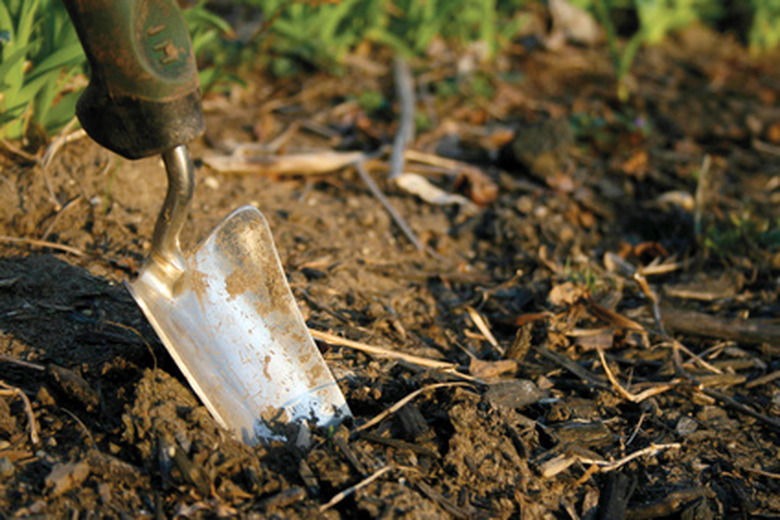What Is The Organic Material Formed In Soil From The Decayed Remains Of Plants & Animals?
A healthy soil contains oxygen, microorganisms, decaying plant and animal matter, and decomposed plant and animal organic material. The remains of the once-living organisms are essential to the soil and form the component of soil known as humus. Humus works with the other elements in the soil to develop soil texture, produce and retain nutrients, and reduce incidence of soilborne diseases.
History
In its infancy as a planet, the earth began forming soil. Minerals in cooling molten lava, a result of volcanic activity, leeched into the earth's newly formed surfaces via rain water and flooding. Minerals such as potassium, calcium and magnesium, along with trace minerals, became "trapped" within the surface. Within time, microbial and plant life evolved. The organic life forms would, of course, die. In decomposition, they enriched the earth's surface and soil. Over 4 billion years, this process remains the same. The decomposed organic matter integrates into the soil as humus.
- A healthy soil contains oxygen, microorganisms, decaying plant and animal matter, and decomposed plant and animal organic material.
- Humus works with the other elements in the soil to develop soil texture, produce and retain nutrients, and reduce incidence of soilborne diseases.
Function
Humus brings structure to soil, influencing texture, mineral content and microbial activity. Plants require both macro and micronutrients to survive. Humus provides structure to the nutrients, holding them together in clusters. The clustered structure aids in the plants' uptake of the minerals. Humus also allows for oxygen and carbon dioxide to flow freely within the soil, both important elements to plant health.
Features
Generous amounts of humus in soil makes the soil loamy, a desirable texture in garden soil. The presence of humus in a sandy soil gives the soil the ability to retain nutrients and water. In a clay type of soil, humus breaks down the clumpy nature of clay, resulting in a looser, more manageable soil.
- Humus brings structure to soil, influencing texture, mineral content and microbial activity.
- Humus also allows for oxygen and carbon dioxide to flow freely within the soil, both important elements to plant health.
Identification
Humus is made of the already decomposed material of plant and animal life. It is a dark brown or black, but isn't usually identifiable as a separate element in a backyard garden. In forests and other agriculturally undisturbed areas, humus is in the top layers of soil. In gardens, humus may be more integrated through the human acts of tilling and planting and turning in compost.
Considerations
Compost made completely from yard waste and kitchen scraps is, essentially, humus. Finished compost is not soil, but the product resulting from microbial activity on decaying matter. Once the organic materials are completely broken down, the product is humus.
- Humus is made of the already decomposed material of plant and animal life.
- In gardens, humus may be more integrated through the human acts of tilling and planting and turning in compost.
Benefits
Turning finished compost into garden soil adds the element of humus to the soil. Healthy amounts of humus in the soil encourage microbial activity, an essential component to keeping soil "alive." The presence of such activity keeps the cycle of birth, life, death and decay in motion, adding to the health and success of the backyard garden.
